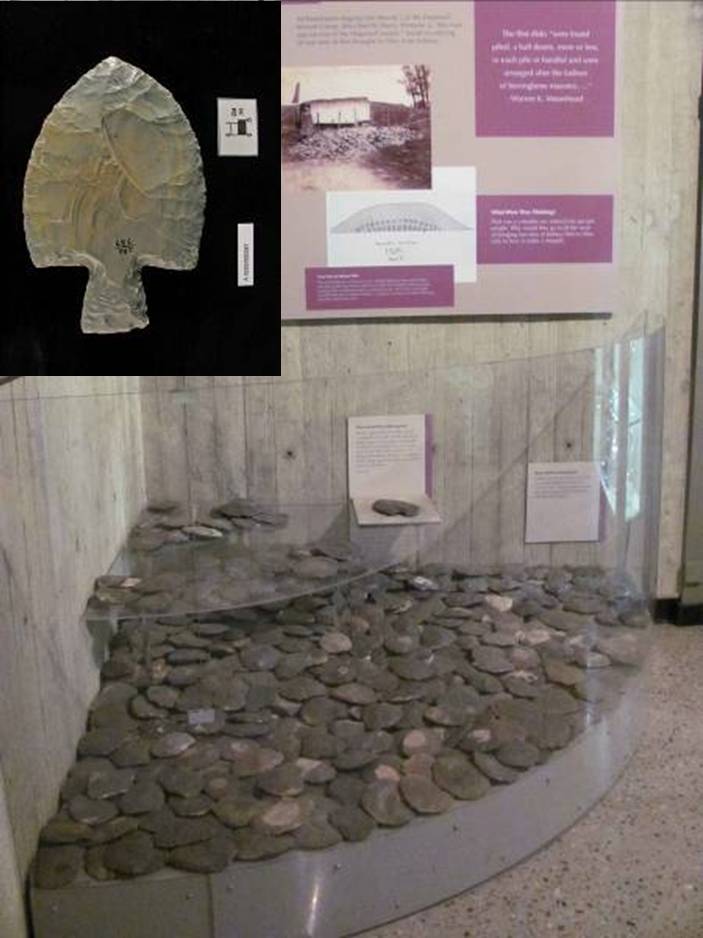
Ohio Hopewell culture — 100 BC to AD 400
If you missed my program on the
Top Ten Masterpieces of the Hopewell Culture, here’s my list. And I should clarify that these are my picks of the Top Ten Hopewell Masterpieces in the collections of the Ohio History Connection. I can think of more than a few artifacts in the collections of the Field Museum in Chicago and at Hopewell Culture National Historical Park that could have made this or anyone’s list of the Top Ten Hopewell Masterpieces. I restricted the list to artifacts on display at the Ohio History Center, because I wanted to be able to share the actual objects with folks rather than just pictures of objects.

Number Ten. A giant spearpoint made from Indiana Hornstone, which was part of 8,000 hornstone disks that were
deposited together in a mound at the Hopewell Mound Group
I don’t claim that I’ve used consistent criteria or even that my list would be the same tomorrow. (In fact, I was adjusting my selections five minutes before the program was supposed to begin.) My choices were based first on whether the objects had a remarkable story to tell and secondarily on whether they were spectacular objects. As I explained to the visitors on the tour, if you only had a short time to spend in the gallery, these are the objects I wouldn’t want you to miss. Together, I think they powerfully convey a lot about Ohio’s Hopewell culture.

Number Nine. A huge copper axe from Seip Mound much too big to have used as an ordinary axe.
The next time you’re at the Ohio History Center, make sure you take the opportunity to see these artifacts. And feel free to come up with your own Top Ten list. I would be interested to see how it compares with mine.

Number Eight. Small stone sphere with an engraved design found at Seip Mound. One of five, they originally were compared to a set of marbles, but based on how members of the Shawnee Tribe attached hide covers to their drums, they may be parts to a Hopewell drum.
Brad Lepper

Number Seven. Fragment of a Hopewell textile from the Seip Mound. It may not look like much, but these fragile bits of fabric are revealing amazing insights into the sophistication and variety of Hopewell textiles.

Number Six. Large Hopewell pipe representing a dog gnawing on a human head. It was found in the Seip Mound, but
it likely was made in Tennessee and brought to Ohio as an offering.

Number Five. A marvelous rendering of a trumpeter swan made from tortoise shell. This comb was found in the Seip
Mound.

Number Four. A large, actually gigantic obsidian spearpoint from the Hopewell Mound Group.

Number Three. The stunning hand effigy carved from mica obtained from North Carolina. This iconic artifact was found at the Hopewell Mound Group.

Number Two. Great Horned Owl effigy pipe from the Tremper Mound. One of 90 effigy pipes intentionally broken and buried together as an offering.

Number One. The Shaman of Newark. Stone sculpture found beneath the largest burial mound at the Newark Earthworks





